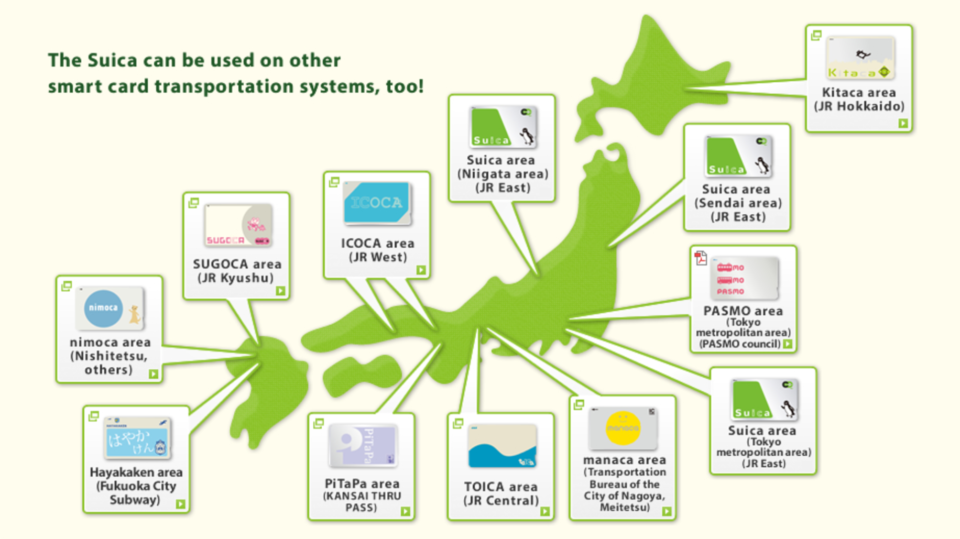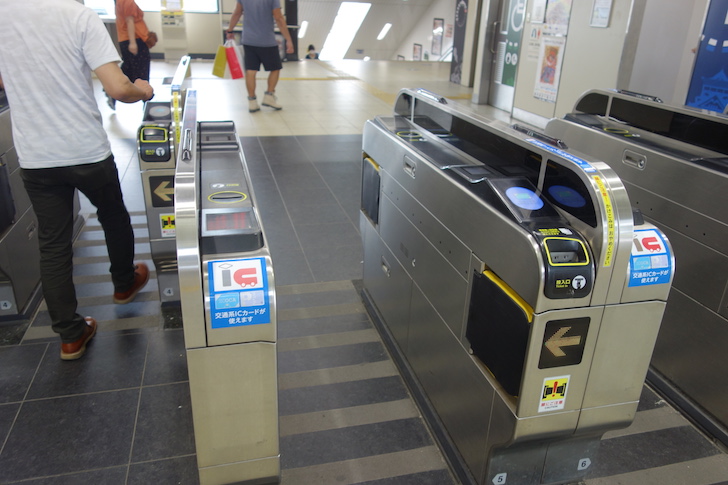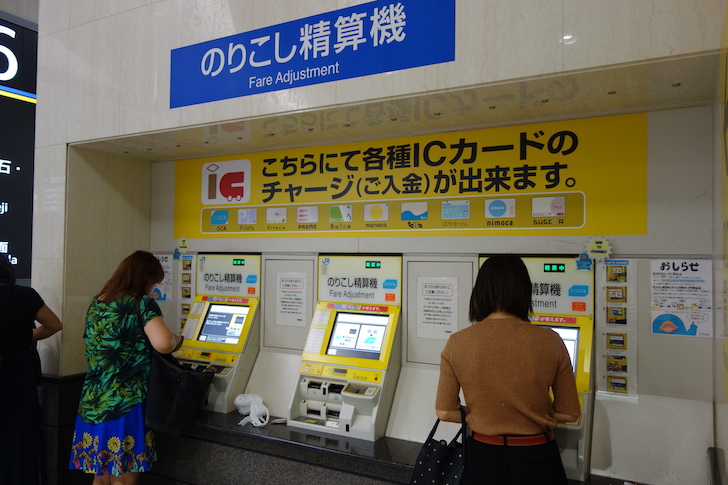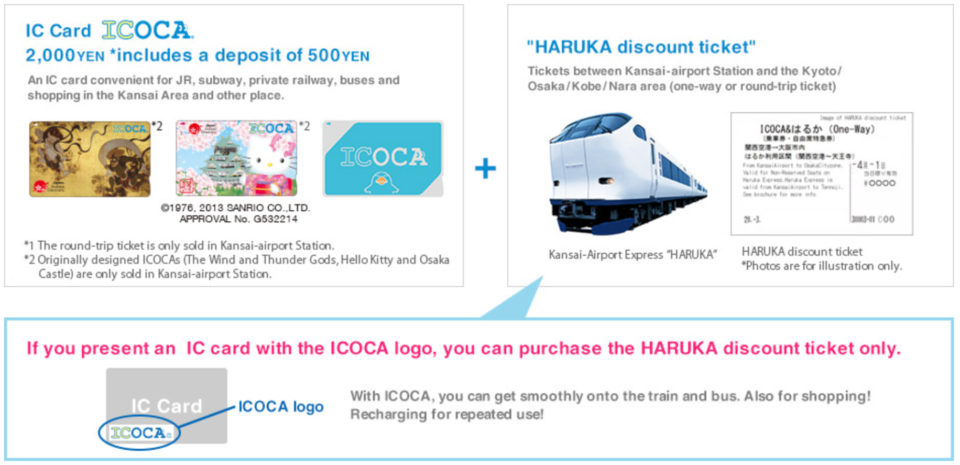I recently got back from my third trip to Japan, yet it was the first time I got a Suica card. I’d previously stuck to paper tickets because it just seemed simpler. Japan can be a busy, chaotic place if you’re not familiar with it. But using Suica was really easier because I could use it for lots of things besides metro fare.
- I used it to pay for a restaurant meal when I ran out of cash, and they didn’t accept credit cards.
- I used it to buy a drink from a vending machine when I didn’t have any small bills or coins.
- You’ll soon be able to use it for a Shinkasen ticket when the machine wouldn’t accept your credit or debit cards.
IC cards like Suica (“IC” means “integrated circuit”) can be used in many, many more places in Japan than the mass transit you may be used to in other cities. You can even load your Suica card onto your mobile phone. But it all starts with getting a card in the first place.

Interchangeable IC Cards
Fortunately, IC cards are largely interchangeable. My first several trips were all to Tokyo or began in Tokyo, so it make sense that I have a Suica. This card has a cute green penguin on the front and is issued by JR East, which operates inter-urban rail in the Tokyo region. You can also get a Pasmo card in Tokyo, which is issued by mass transit operators other than JR East.

If you start in the south, near Osaka or Hiroshima, you’ll probably find Icoca. This card is issued by JR West. Like Tokyo, there is also a card, PiTaPa, issued by other transit operators in this city. However, you’re not likely to get a PiTaPa card because you need to set up an account to pay after your journey, while all the other cards are pre-loaded with funds that are deducted as you use them.
Several other cards exist that I won’t go into. I think Kitaca is probably my favorite, issued by JR Hokkaido in the Sapporo region. But that’s just because I like the idea of a flying cat.
Basically, anywhere you see an “IC” symbol or something that looks like an IC card reader would probably accept your card, even if it’s not native to the region where you purchased it. One known exception is that Suica cannot be used by stores in the PiTaPa network, probably because of the post-payment issue. But you can still use Suica for PiTaPa transit options.
How Do IC Cards Work?
IC cards in Japan use Sony’s FeliCa technology, which was actually first used in Hong Kong but hasn’t seen much interest in America. Here, contact cards often have more limited roles. Even my student ID, which has a wireless chip for my bus pass, still uses a magnetic strip to store cash value for purchases on campus. It’s not until recently that FeliCa has made it’s way to electronic devices outside Asia, and I showed yesterday how you can load your Suica or other IC card onto your iPhone 8 or iPhone X if traveling to Japan.
Purchasing an IC Card
The most important thing to remember is that these cards are (with few exceptions) pre-paid, so you need to use cash. You can’t load them with a credit card unless you’re buying them online through some tourist package before arriving in Japan, and once you arrive you will need to use cash to top them up.
I got mine at Tokyo-Narita while waiting for the Narita Express train to the city. Although I could have purchased the card at a JR East vending machine, I ended up visiting the snack shop on the station platform instead. All I needed was cash, and I was already past the turnstile, so I found a 7-Eleven ATM near the barrier and was able to reach over far enough to use my debit card. 😉
Your Suica card will cost ¥2,000 which includes an initial ¥1,500 balance and a ¥500 deposit for the card. You can get most of the deposit returned when you leave the country, but I recommend you just keep the card for a future trip.
Using an IC Card
For meals, vending machines, convenience stores, and taxi fare, you just need to tap your IC card on the reader near the cash register when indicated.
If you’re going to be using your IC card for any kind of mass transit, then it’s much simpler. Tap your card as you enter the station and tap again as you exist. Your fare will be calculated automatically and deducted. However, if you change your mind and need to exit the station you mustexit through the same turnstile. In Japan, where a large station might have several entrances each with 10 to 20 turnstiles, that can be hard to find.

It won’t be possible to use an IC card for a Shinkasen ticket until September 30, and even then it will be limited to the Tokaido-Sanyo line (connecting Tokyo to Osaka) for customers who have linked a credit card to their IC card online. In any case, I found it pretty simple to visit the cashier and purchase a ticket in person. (The linked credit card makes sense because a Shinkasen ticket can easily run over ¥10,000.)
To reload your IC card, you can visit any of the vendors, including convenience stores, that sell them in the first place. I find it easier to just use a fare adjustment machine in the train station. You can use these to add value to any IC card, not just the type sold in that region.

Discounts on IC Cards
Depending on where you travel and current promotions, it might be possible to get a discount on your ticket when purchasing airport transportation and an IC card together. For example, Osaka is currently providing discounted travel on the Haruka Express in combination with an Icoca card when you purchase both together at Osaka-Kansai station. Even if you already have an Icoca card you can still get this discount.

I also found an old press release for a similar deal between Narita Express and Suica, but there’s no evidence it is still in effect. The point is you should examine your options depending on which city you fly into and your particular transportation needs. If you need an IC card anyway for your next trip to Japan, here’s a way to save some money!
